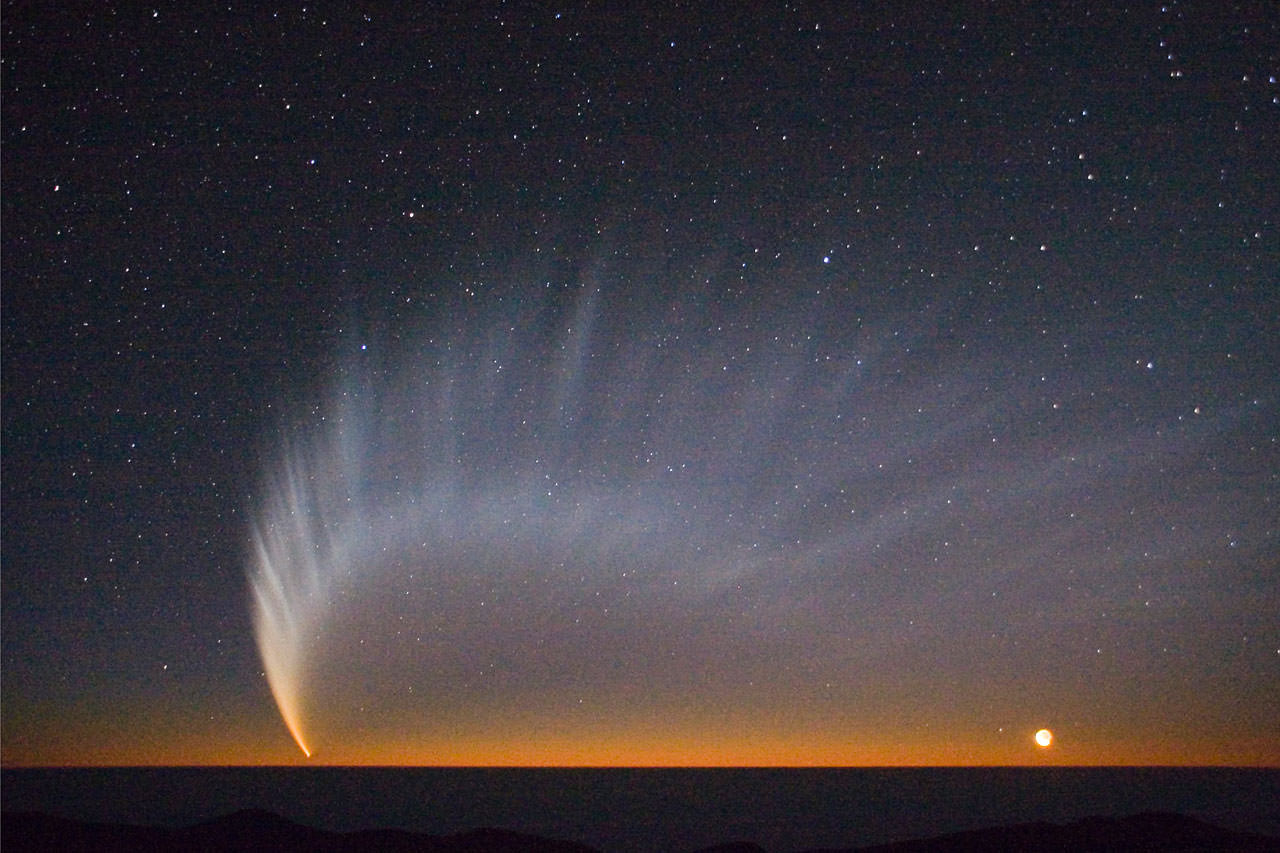[/caption]
There are different ways to measure a comet. The Hale Bopp Comet, for example has a nucleus of more than 60 miles in diameter, which is thought to be the biggest ever encountered, so far. And Comet Hyakutake’s tail stretched out at a distance of more than 500 million km from the nucleus, the largest known. But now a group of scientists have identified a new category of measuring a comet’s size: the region of space disturbed by the comet’s presence. And for this class, first prize goes to Comet C/2006 P1 McNaught, which graced our skies in Janauary and February 2007. Of course, McNaught might win the prize for most picturesque comet, too, as this stunning image from Sebastian Deiries of ESO shows.
Dr. Geraint Jones of University College, London and his team used 2007 data from the now-inoperable Ulysses spacecraft, which was able to gauge the size of the region of space disturbed by the comet’s presence.
Ulysses encountered McNaught’s tail of ionized gas at a distance downstream of the comet’s nucleus more than 225 million kilometers. This is far beyond the spectacular dust tail that was visible from Earth in 2007.
“It was very difficult to observe Comet McNaught’s plasma tail remotely in comparison with the bright dust tail,” said Jones, “so we can’t really estimate how long it might be. What we can say is that Ulysses took just 2.5 days to traverse the shocked solar wind surrounding Comet Hyakutake, compared to an incredible 18 days in shocked wind surrounding Comet McNaught. This shows that the comet was not only spectacular from the ground; it was a truly immense obstacle to the solar wind.”
A comparison with crossing times for other comet encounters demonstrates the huge scale of Comet McNaught. The Giotto spacecraft’s encounter with Comet Grigg-Skjellerup in 1992 took less than an hour from one shock crossing to another; to cross the shocked region at Comet Halley took a few hours.
“The scale of an active comet depends on the level of outgassing rather than the size of the nucleus,” said Jones. “Comet nuclei aren’t necessarily active over their entire surfaces; what we can say is that McNaught’s level of gas production was clearly much higher than that of Hyakutake.”
Jones presented his findings at the RAS National Astronomy Meeting in Glasgow, Scotland.
Source: RAS NAM

